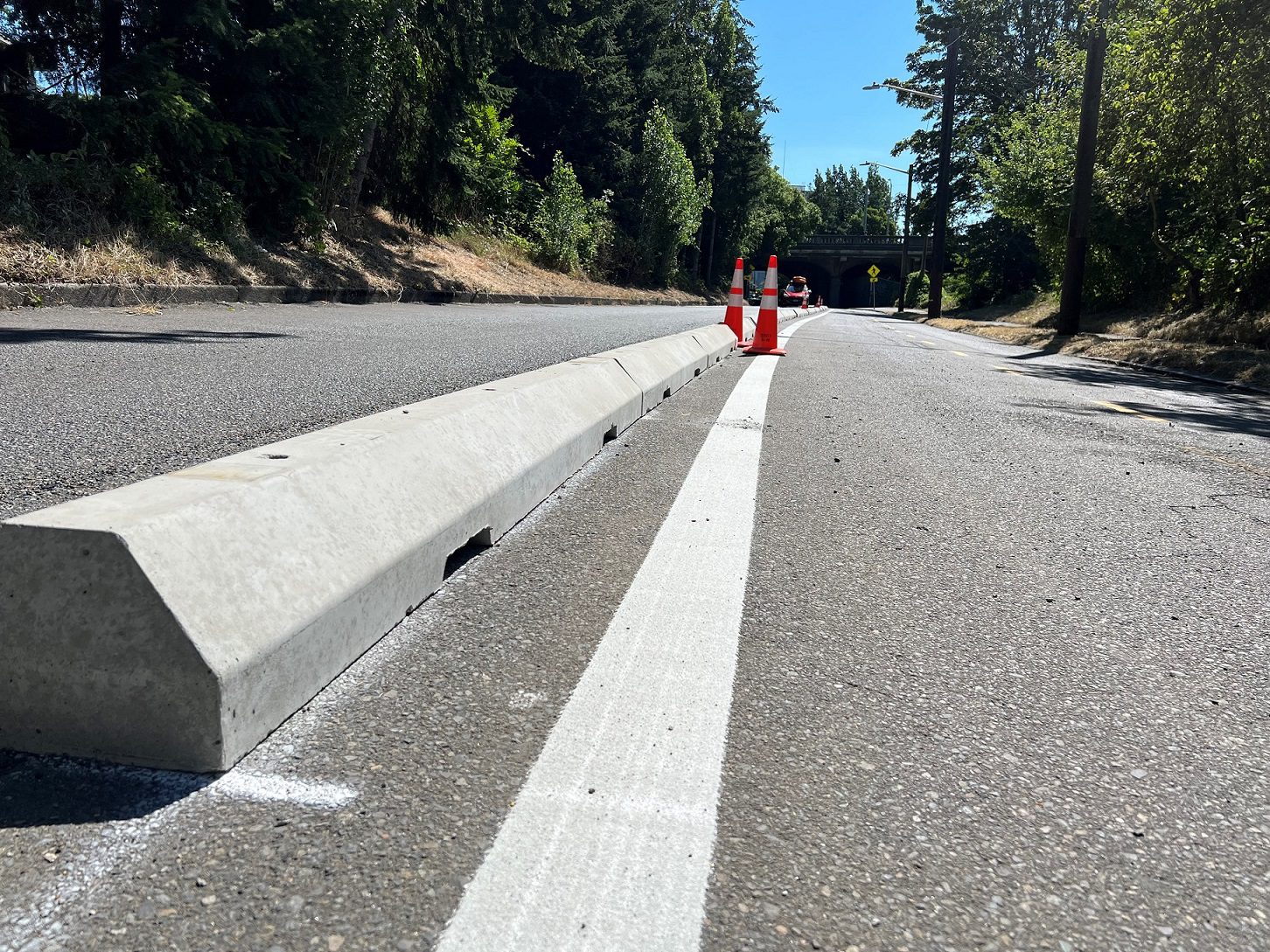 Last weekend, we upgraded plastic posts to concrete on a segment of the two-way bike lane on NE 40th St near the north end of the University Bridge.
Last weekend, we upgraded plastic posts to concrete on a segment of the two-way bike lane on NE 40th St near the north end of the University Bridge. Status update – August 19, 2022:
Thank you to everyone who participated in the Twitter poll for the Even Better Bike Lanes pilot locations. After 484 votes, the winning location is westbound S Othello St from 45th Ave S to Martin Luther King Jr Way S! Our project team is beginning the design phase of the project and will be upgrading the existing bike lane with our pilot material(s) in the coming months.
Due to the enthusiasm and support for the project, we are including three additional locations in the Even Better Bike Lanes pilot program:
- NE 40th St (between 7th Ave NE and Lincoln Way) Installed
- Westbound S Othello St (between 45th Ave S to Martin Luther King Jr Way S) Winner
- Northbound 9th Ave (south of Mercer St) Added to the program!
- S Columbian Way (between S Snoqualmie St & 16th Ave S) Added to the program!
- S Dearborn St (between 10th Ave S & 13th Ave S) Added to the program!
In addition to community feedback, we are expanding the number of pilot locations in the Even Better Bike Lanes program to test all four of the new materials we are considering for future implementation. Future locations for upgraded materials will be selected through a data-informed process that considers community feedback, maintenance needs, equity, ridership volumes, traffic data, cost, and feasibility.
The purpose of this program is to test the effectiveness and durability of the pilot materials, with the long-term intention of identifying the best material(s) for a wider implementation of upgrading existing bike lanes while implementing new bike lanes throughout the city.
Do you have suggestions for locations that would benefit from #EvenBetterBikeLanes upgraded materials? Email: jonathan.frazier@seattle.gov
Summary:
- We’re excited to share that we’re launching a new pilot program to test out new materials for bike lane protection to better separate people rolling, scooting, and biking from vehicle traffic.
- Thanks to your tax dollars through the Levy to Move Seattle, we upgraded plastic posts to concrete on a portion of the protected bike lane on NE 40th St last weekend!
- We have been expanding the city’s network of protected bike lanes to enhance safety and encourage bicycle ridership.
- The Even Better Bike Lanes pilot program is exploring four different materials to both replace existing plastic posts, or to add a new protection to existing paint-only bike lanes.
- We want to hear from you! We launched a poll to hear from the public where they would like to see even better bike lane pilot materials be installed. Click here to access the poll.
Since the first documented bicycle arrival in Seattle in 1876, Seattle’s network of bicycle routes has expanded throughout the city. Advocacy and community organizing from community groups such as the Queen City Good Roads Club and the Cascade Bicycle Club have rallied for bicycle infrastructure to continue to be valued and prioritized. This community activation helped identify opportunities for growth in Seattle’s bicycle network.
Now that Seattle has a more established network of safe bicycle routes in the form of bike lanes and multi-use trails, we can focus more on making this network even safer. In more recent decades, we have seen the standard of bicycle designation and protection evolve to further prioritize the safety and comfort of people riding, from sharrows (shared lane arrows noting bikes are present), to painted bike lanes, to buffered bike lanes, to protected bike lanes, and now, Even Better Bike Lanes.
Like other cities that have quickly expanded their bike network over the past decade using materials like paint and flexible posts, we’ve been considering ways to improve upon what we’ve already built. We are in conversation with cities across North America to best navigate the endeavor of upgrading existing bicycle routes with new materials. By focusing on segments of Seattle’s bike lanes with the greatest potential to benefit from upgraded materials, Seattle is joining cities across the nation that have been discussing the feasibility of pursuing alternative materials for bike lane protection. Some cities are pursuing this endeavor at varying scales: While New York City and Chicago have plans upgrade bike lanes with concrete protection, other cities have been able to very quickly upgrade bike routes with hard plastic “armadillos”. Each of these have pros and cons, so we want to try them all out to see which option will work best in Seattle. From the East Coast to the West Coast, and up here in the Pacific Northwest, the quest for an Even Better Bike Lane begins!
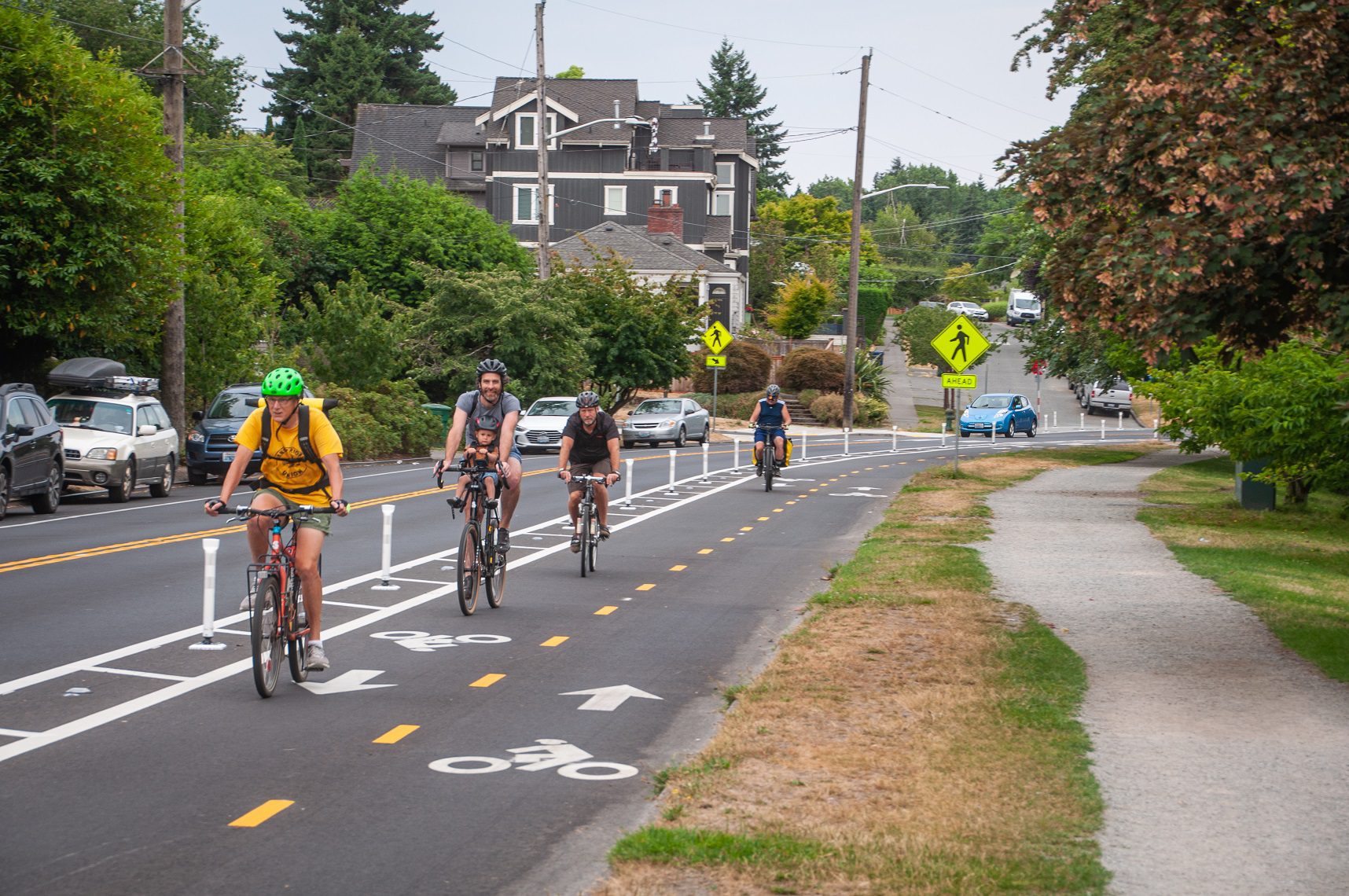
Protected bike lanes offer a safer, more comfortable option for bicycle and scooter users of all ages and abilities to get around. The buffered separation of the bike lane from the vehicle travel lane improves comfort and enhances safety for those riding. This extra protection also alleviates some of the risk of getting harmed while cycling, which helps encourage people that are interested in cycling, but concerned for their safety to get on their bikes more. We have a plan to expand the network of bicycle routes with comfortable separation in hopes of increasing the number of people that choose active forms of transportation, like scooting or biking.
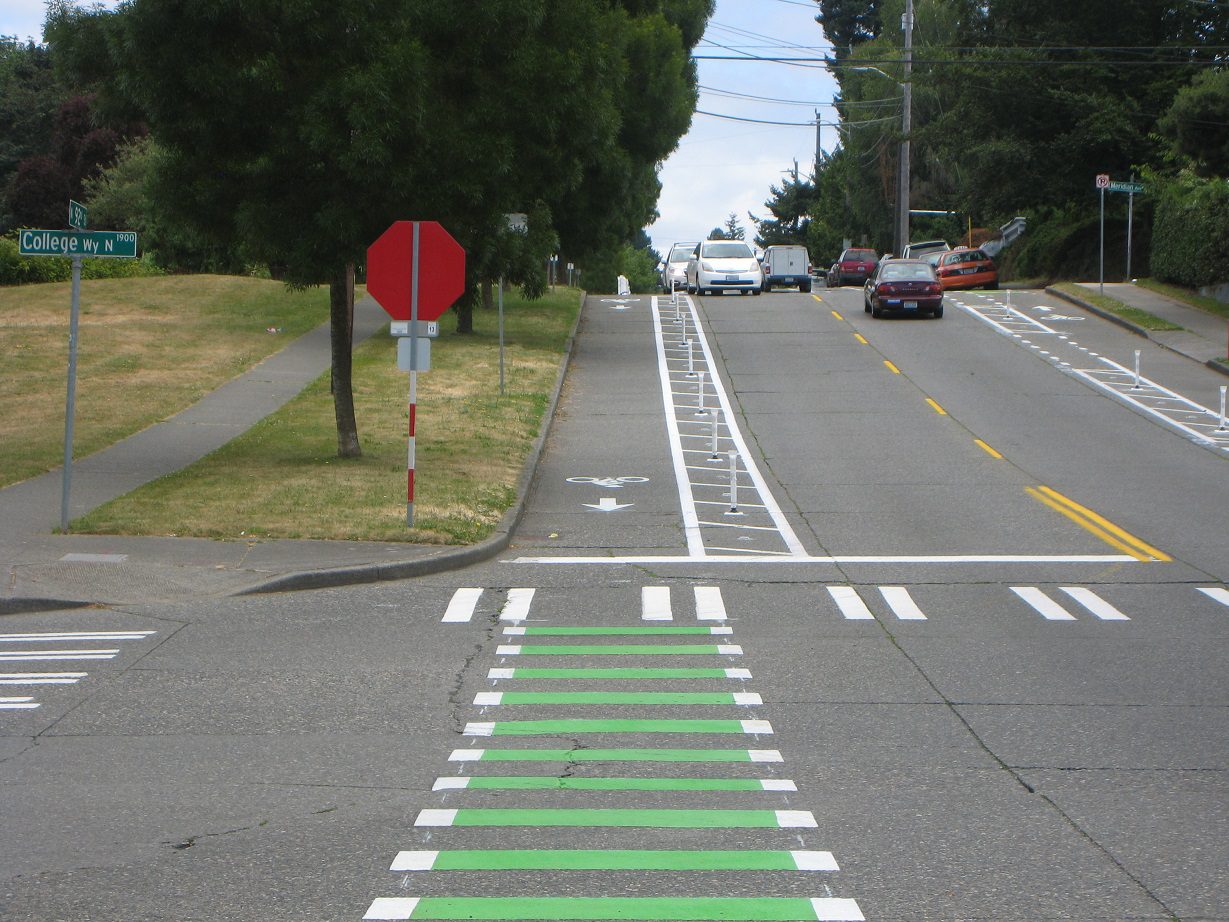
Currently, plastic posts (also known as tubular markers, or flexible delineators) are the standard for Seattle’s protected bike lanes and have continued to be the national industry standard for over a decade. Due to their availability and ease of installation, plastic posts have assisted in solving many of the challenges of planning and implementing new protected bike lanes. For example, the flexibility of plastic posts has allowed us to install protected bike lanes throughout the city in locations that may require access for emergency vehicles. That being said, because of their flexibility, plastic posts require continued maintenance and replacement when they are broken or detached. Taking this into consideration, in tandem with advancing safety and comfort, we are pursuing a pilot program to test out new alternative materials on bike lanes throughout the city.
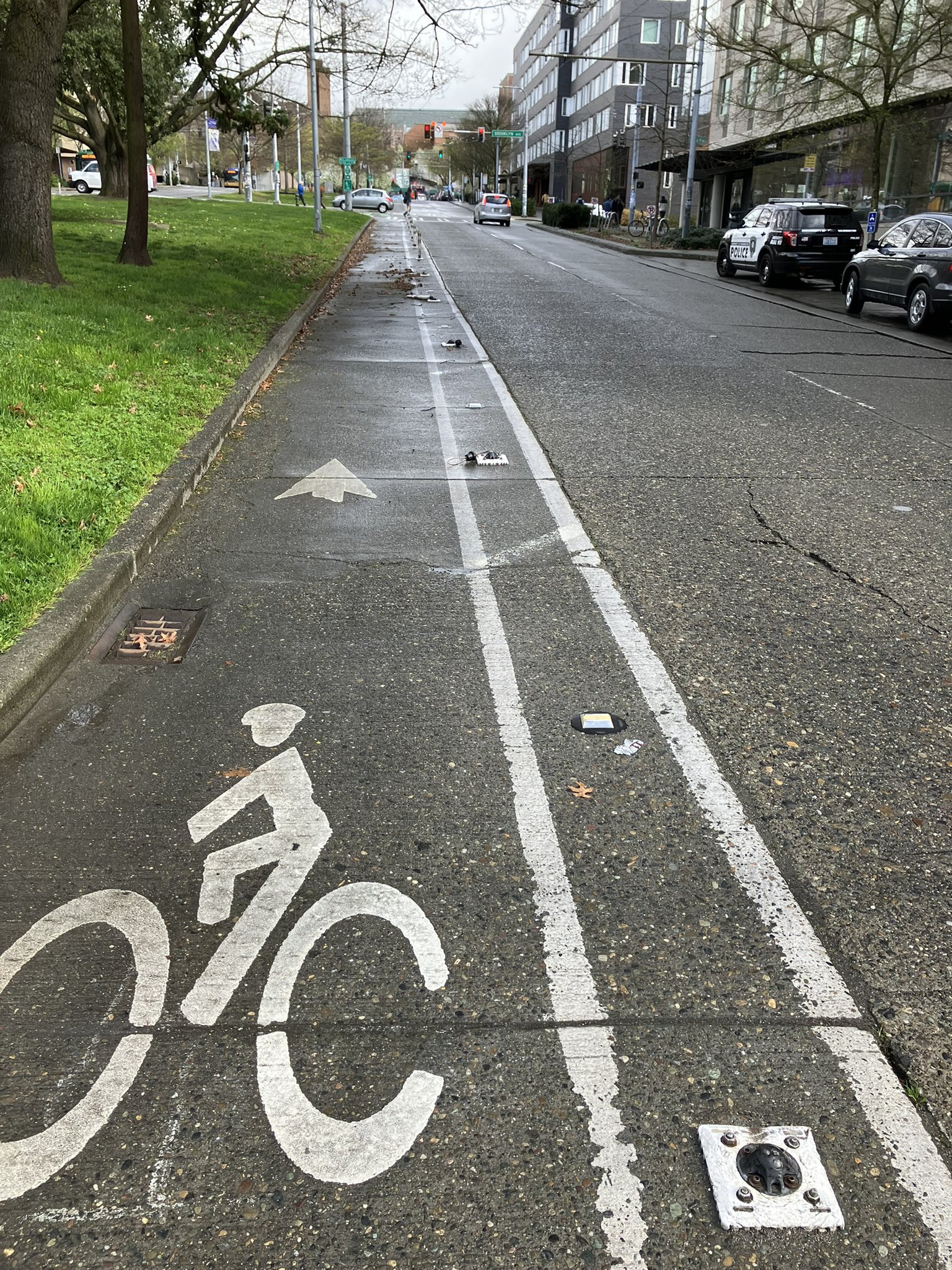
There are successful examples of protect bike lanes throughout the city that have used alternative materials for protected bike lanes, and we recognize the increased protection and improved aesthetics of more solid materials. The #EvenBetterBikeLanes pilot program is an opportunity to try out new materials that require less maintenance, provide even more robust protection, and are also easier on the eyes.
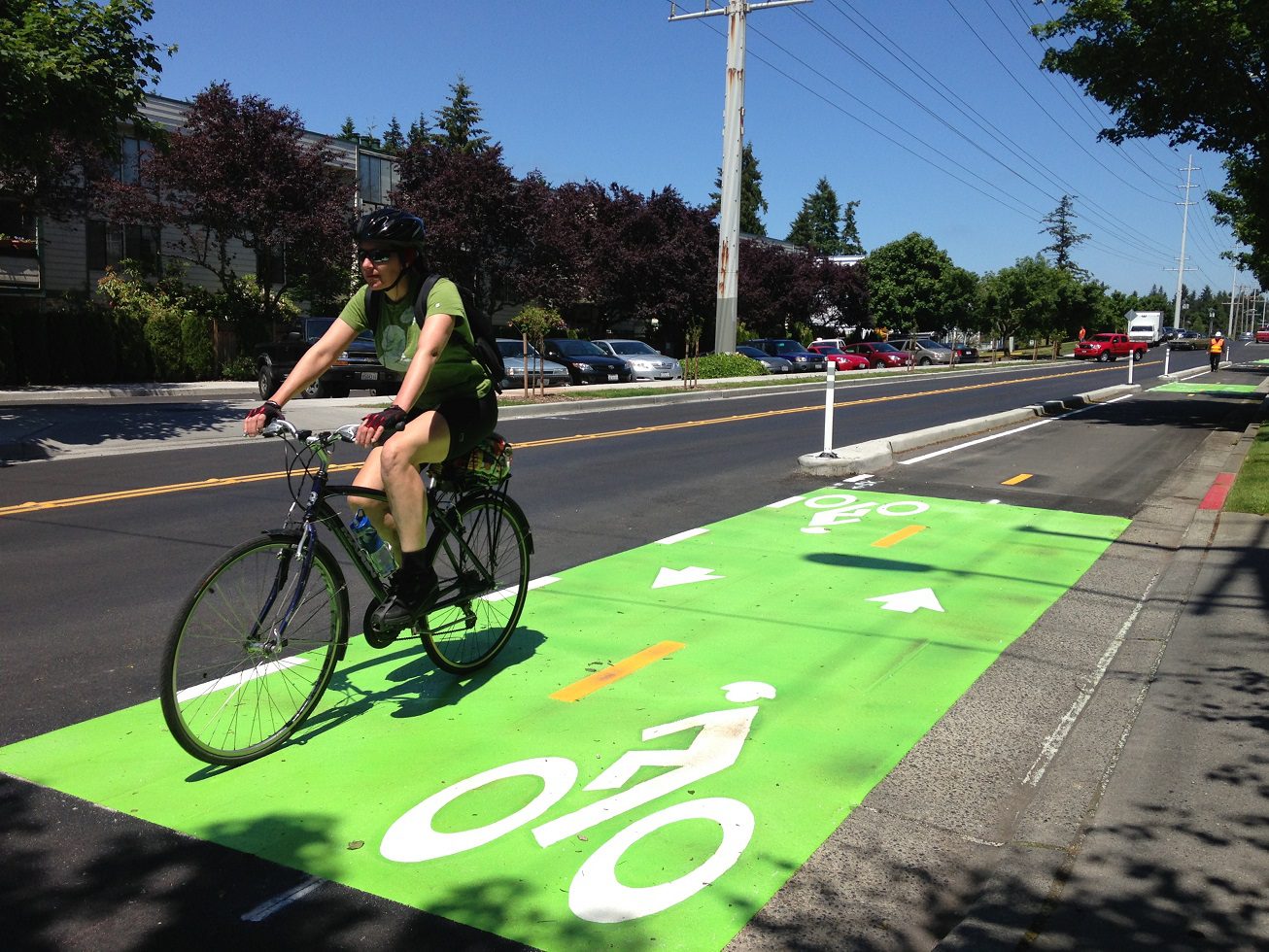
We are considering 4 types of materials for the Even Better Bike Lanes pilot program:
Option #1: Concrete Guard
The first option, the concrete guard, is commonly used in Canada after first being piloted by the City of Toronto. It is a mid-sized concrete form between a standard curb and a full-size divider. Option #1 is the largest material our engineers are considering using in this pilot program, which comes with its own set of pros and cons.
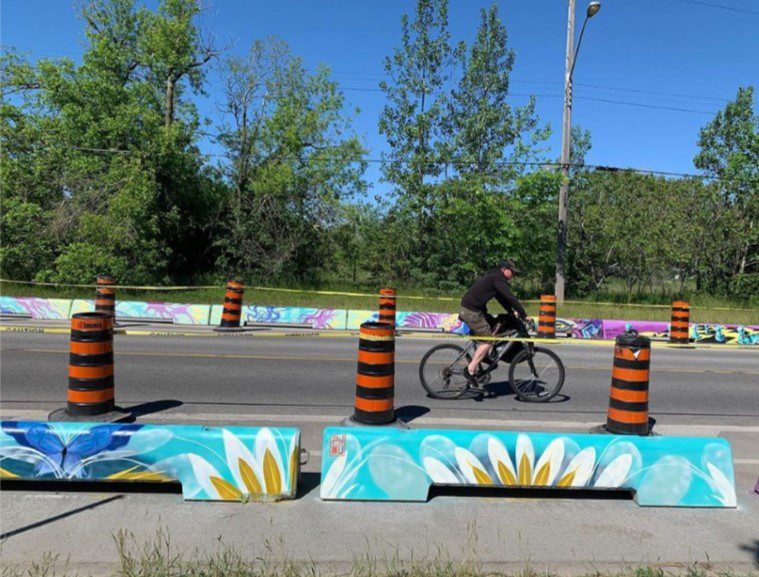
Pros:
+Concrete is a long-lasting material.
+The size and height of the concrete guard provides robust protection.
+Manufactured with built-in drainage feature.
+Easier to install than full-size concrete dividers.
+The surface area provides opportunities for public art and placemaking.
Cons:
-Due to the weight and the precast nature of the concrete guard, it requires being forklifted into place.
-Logistically difficult to build on a large scale due to the current lack of local suppliers, which may result in a slower project delivery.
-The surface area, especially if left bare, is a tempting target for graffiti.
Option #2: Concrete Parking Stop
We’re all familiar with this form of concrete from parking lots, but did you know parking stops can be repurposed for bike lane protection? Parking stops come in a variety of sizes, but the most common standard industrial curb is 12 inches wide and 7 inches tall. We’ve used smaller parking stops as part of SDOT projects before, but this will be the first implementation of the larger size to protect Seattle’s bike lanes.
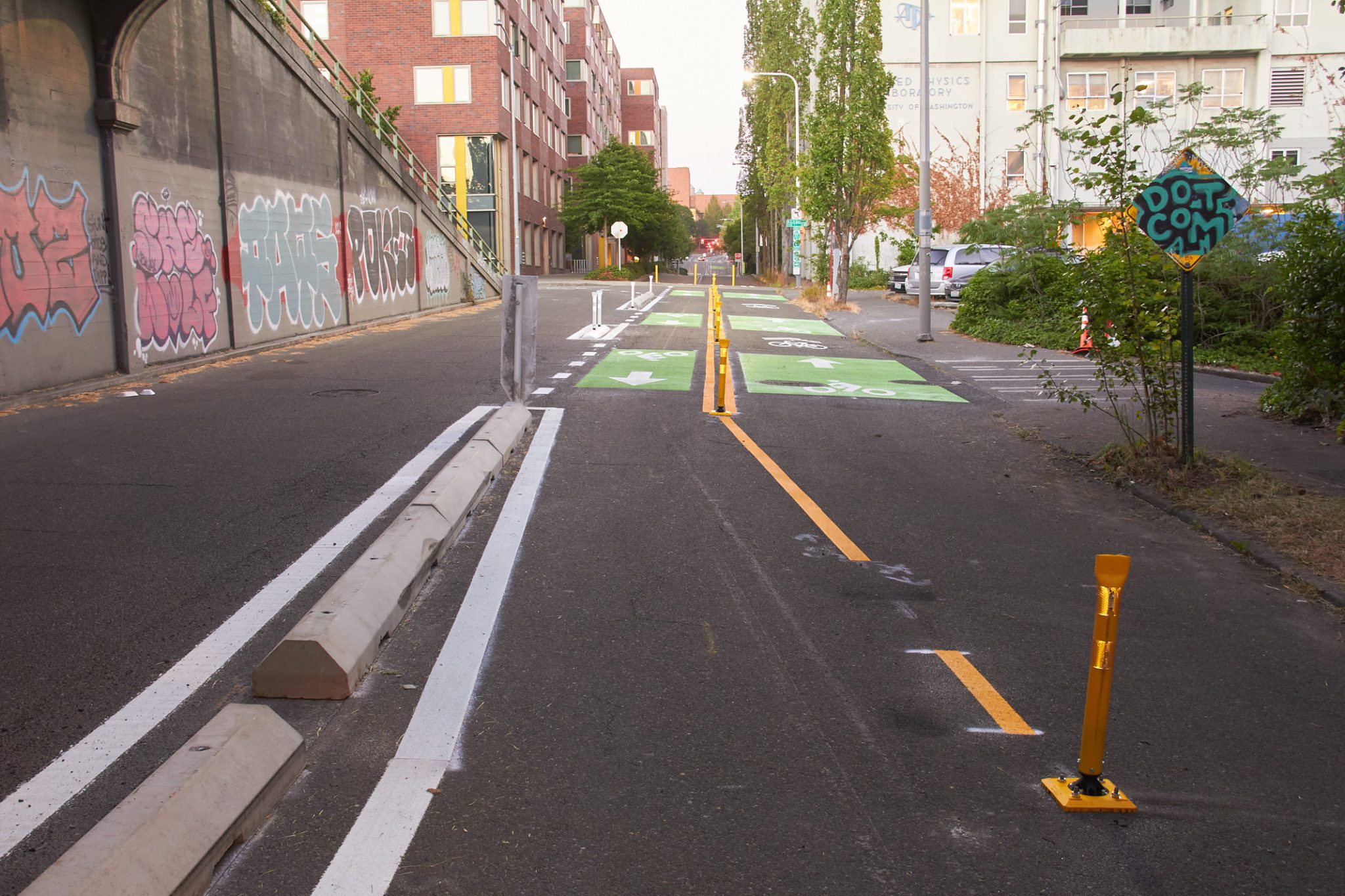
Pros:
+The wide availability of parking stops makes them easier to build quickly.
+Ease of implementation helps contribute to timely project-delivery.
+The concrete material is long lasting and provides substantial protection.
Cons:
-Less vertical height and therefore, less visible to drivers. (This can be supplemented with the addition of plastic posts on top of the parking stops.)
-Larger sized parking stop requires forklifts to install
Option #3: Raised Curb
Instead of pre-casting the concrete structure and transporting it to the site, the raised curb option is poured and molded from a machine on-site.
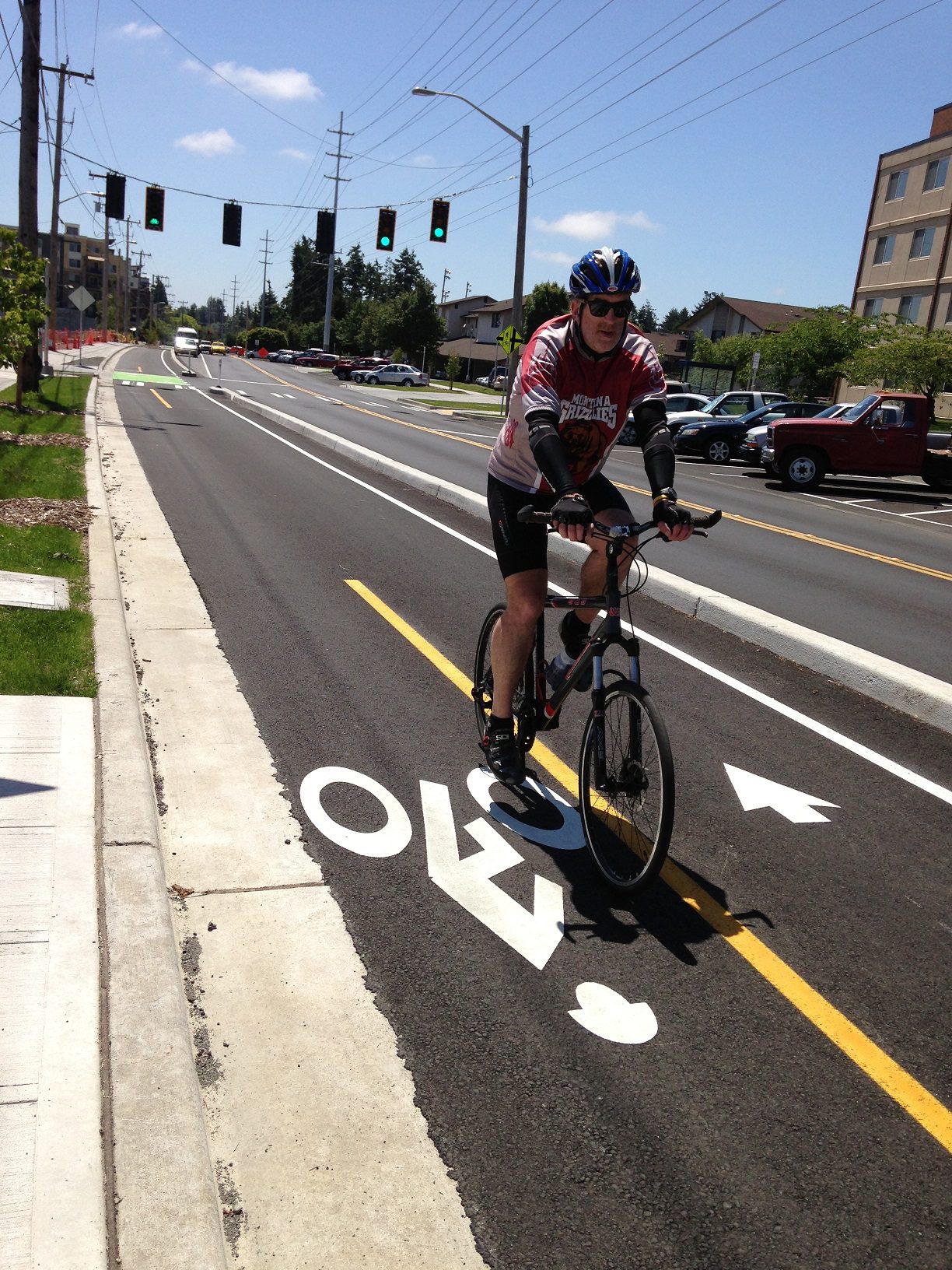
Pros:
+Concrete is a long-lasting material.
+Can be molded in a variety of forms, curves, and heights accommodating turns, bump-outs, and other street features.
Cons:
-Can be expensive for longer segments.
-May be less durable at locations like curves.
-Requires the use of specialized machinery or contractors.
Option #4: “The Armadillo”
Named for its likeness to the shelled-mammal, option #4 is made from recycled plastic. “The Armadillo” is a more direct replacement for flexible delineators than the concrete materials and could prove useful in areas with weight limits or width constraints.
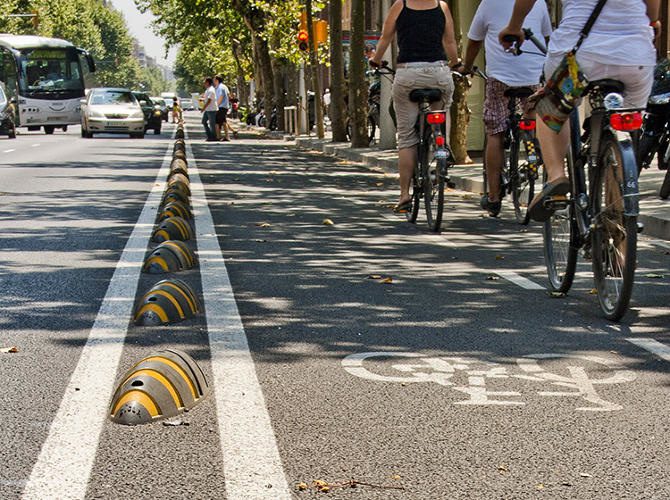
Pros:
+Emergency vehicles can drive over, which means they can be implemented practically anywhere.
+Easy and quick to install.
Cons:
-Less protection than the other options.
-Although they are longer-lasting than traditional plastic posts, they are not as durable as concrete.
Last weekend, we installed concrete parking stops (option #2) at the first pilot location for the Even Better Bike Lanes project, the protected bike lane on NE 40th St protected between 7th Ave NE and Lincoln Way. We chose this as our first test location because this segment of NE 40th St plays a key role in the bike network, connecting the University Bridge and the Burke Gilman Trail. We’ve received a lot of feedback from the community that this location frequently has cars driving and parked in the bike lane, which makes it an excellent candidate to test out new materials. We will continue to monitor and evaluate the location after installation to assess efficacy and community perception.
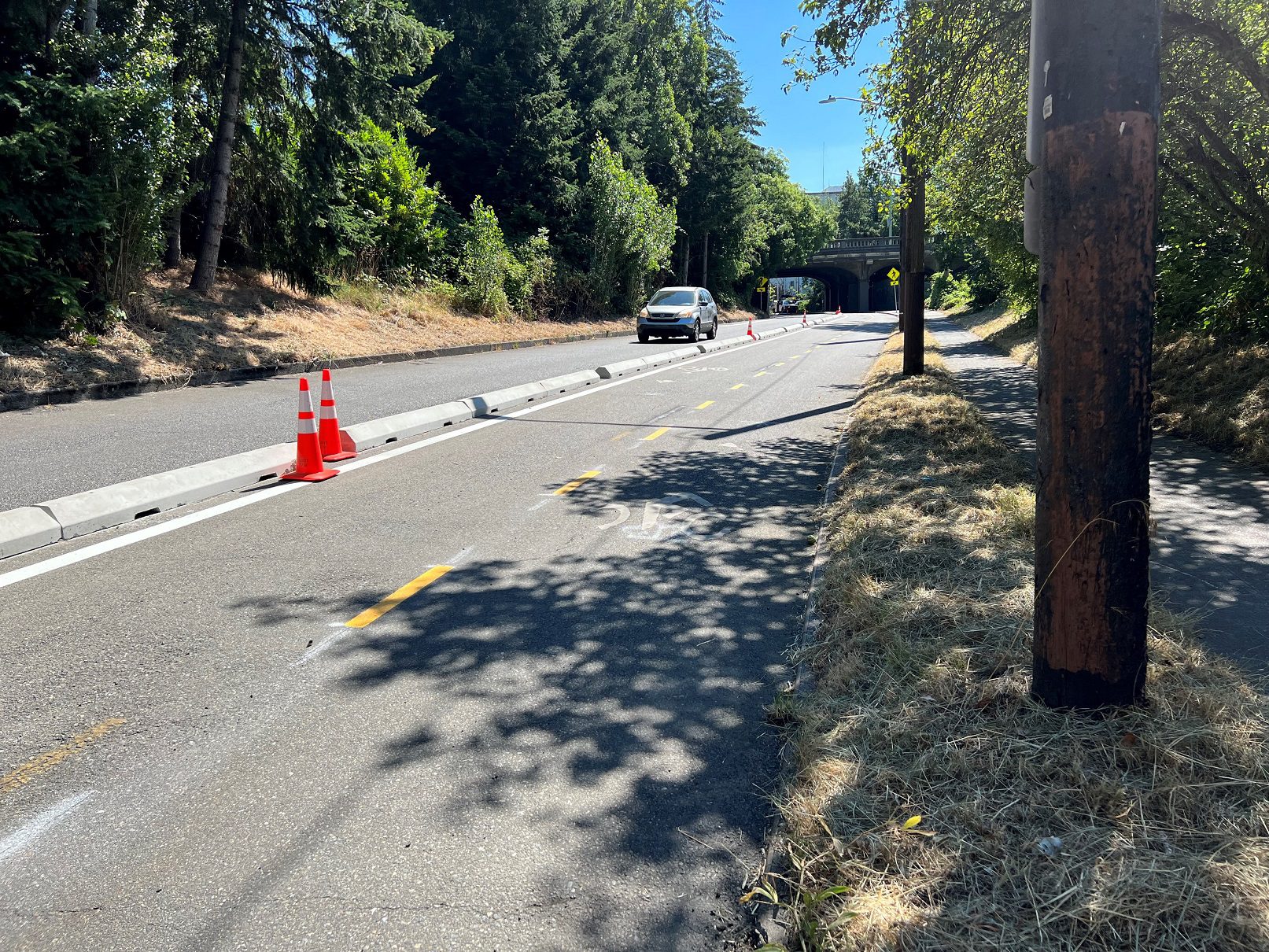
We are exploring additional pilot locations to be installed as time allows this year.
This is where YOU come in. To help supplement our data-informed approach, we want to hear from the community about specific short segments of bike lanes throughout the city that are regularly blocked by cars and/or frequently damaged and missing posts.
Thanks to the outreach efforts of our community partners at Seattle Neighborhood Greenways and Cascade Bicycle Club, we have identified 4 locations that would be great candidates for the Even Better Bike Lane pilot program. The candidates for testing Even Better Bike Lanes came from community suggestions of places where parked vehicles often block the way. Each candidate is either a painted bike lane that warrants upgrading to a protected bike lane or is an existing protected bike lane that requires extra maintenance.
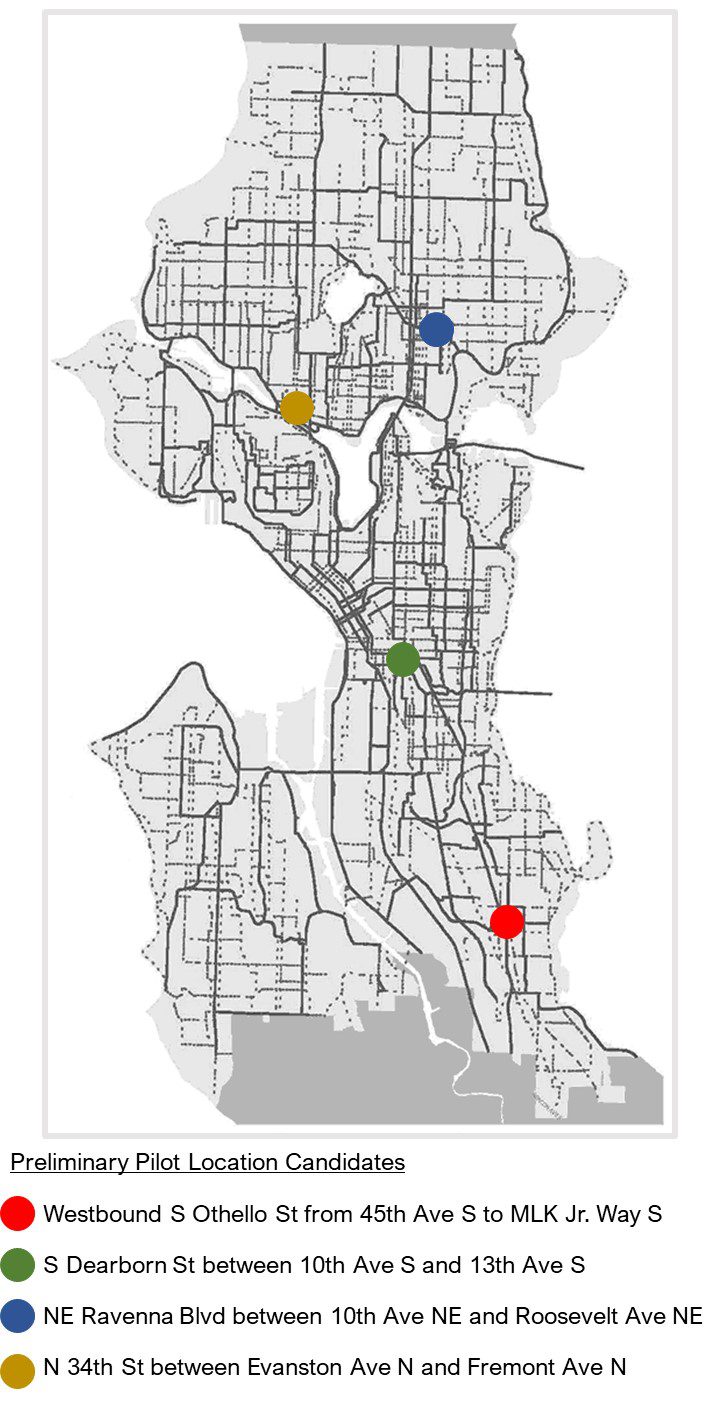
- Westbound S Othello St from 45th Ave S to MLK Jr Way S
- S Dearborn St between 10th Ave S and 13th Ave S
- NE Ravenna Blvd between 10th Ave NE and Roosevelt Ave NE
- N 34th St between Evanston Ave N and Fremont Ave N
Where would you most like to see Even Better Bike Lane materials installed next?
Click here to access our poll to share your input.
Don’t have access to Twitter and want to provide your feedback? Contact us through the Bicycle and Pedestrian Program communication channels:
Bicycle and Pedestrian Program
walkandbike@seattle.gov
(206) 684-7583


